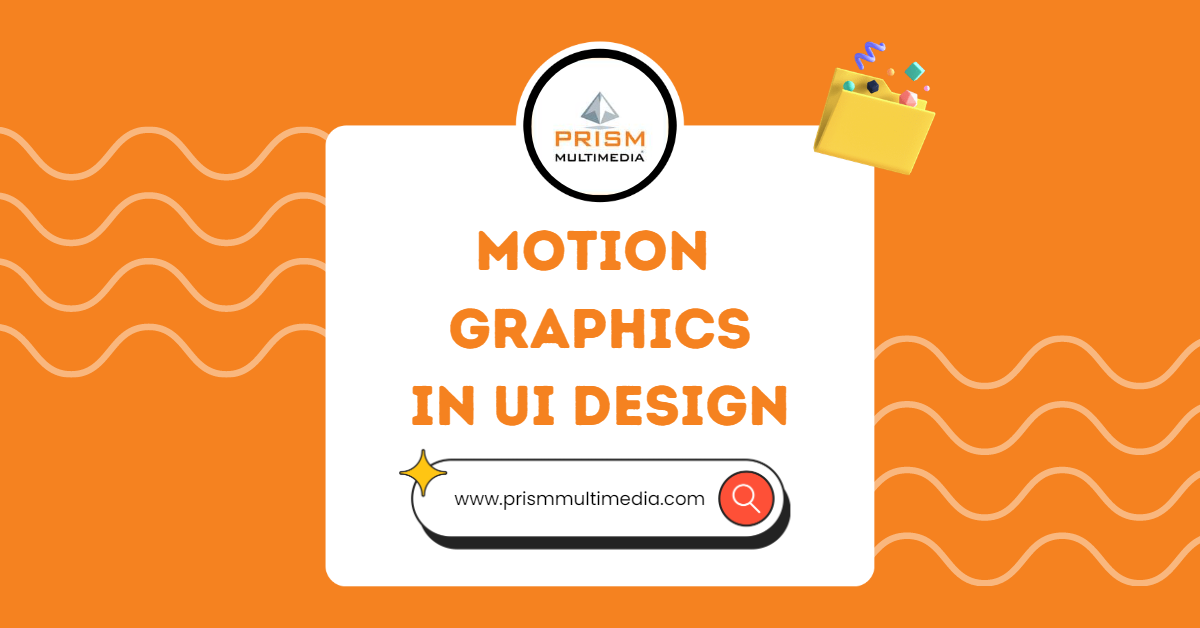Motion Graphics in User Interface (UI) Design.
June 24, 2023

Motion graphics have important role in modern user interface (UI) design, transforming static interfaces into dynamic and engaging experiences. By incorporating motion elements such as micro-interactions, transitions, and animated feedback, UI designers can significantly enhance the user experience. This blog addresses the importance of motion graphics in UI design and demonstrates how they contribute to creating interfaces that are more intuitive, engaging, and user-friendly.
The Importance of Motion Graphics in UI Design Motion graphics are visual elements that bring movement and life to user interfaces. They provide a range of benefits, from catching the user's attention to guiding their interactions and enhancing usability. By leveraging motion graphics strategically, UI designers can create interfaces that are not only aesthetically pleasing but also highly functional and intuitive.
1. Grabbing User Attention:
In these days, where users are constantly bombarded with information, it is very important to grab their attention quickly. Motion graphics serve as eye-catching elements that attract and retain user focus. By incorporating subtle animations, designers can guide users towards essential information, key functionalities, or calls to action, increasing the likelihood of engagement and conversions.
2. Micro-Interactions for Real-Time Feedback:
Micro-interactions are small, purposeful animations triggered by user actions. These interactions provide immediate feedback, helping users understand the outcome of their actions and creating a sense of interactivity. For instance, a button that changes colour or shape when hovered over communicates its clickable nature, instilling confidence in the user. Micro-interactions not only enhance the user experience but also provide visual cues that improve usability.
3. Smooth Transitions for Seamless Navigation:
Transitions play a vital role in creating a seamless user experience. Well-executed transitions between screens or elements within an interface enhance the sense of continuity and guide users effortlessly through the interface. By employing motion graphics, designers can establish visual relationships, reducing confusion and enhancing the overall navigation experience. Smooth transitions contribute to a more intuitive and enjoyable interaction with the interface.
4. Animated Feedback for Intuitiveness:
Motion graphics can bridge the gap between user actions and system responses, making interfaces more intuitive. Through animation, designers can depict cause-and-effect
relationships, visually communicating how users' actions influence the interface. For example, dragging and dropping an item can be accompanied by an animated transition that illustrates the action and its outcome. These visual cues improve usability, reducing the learning curve for users and enhancing their overall experience.
5. Creating Engaging Interfaces:
Motion graphics can evoke emotions and create a more engaging user experience. By incorporating thoughtful animations, designers can infuse personality and playfulness into the interface, making it more enjoyable to interact with. These animations can establish a unique brand identity and generate positive associations with the interface. Emotional connections fostered through motion graphics contribute to user loyalty and long-term engagement.
Motion graphics serve as a catalyst for enhancing user experiences in UI design. Through micro-interactions, transitions, and animated feedback, motion graphics transform static interfaces into dynamic and engaging experiences. By leveraging the power of motion, UI designers can effectively guide users, communicate feedback, improve intuitiveness, and create emotional connections. The result is a more immersive and enjoyable user experience that fosters user satisfaction and loyalty. As the digital landscape continues to evolve, embracing motion graphics in UI design becomes increasingly essential for staying ahead in the pursuit of excellence and By strategically utilizing motion graphics, UI designers can capture user attention, provide real-time feedback, improve navigation, enhance intuitiveness, and create emotional connections. Embracing the potential of motion graphics is crucial in creating interfaces that stand out in today's competitive digital landscape.

